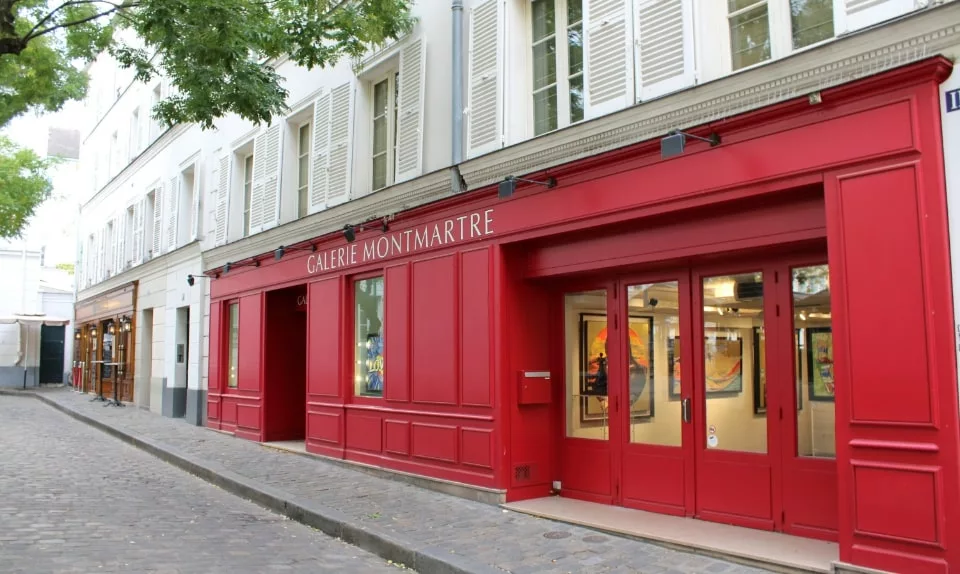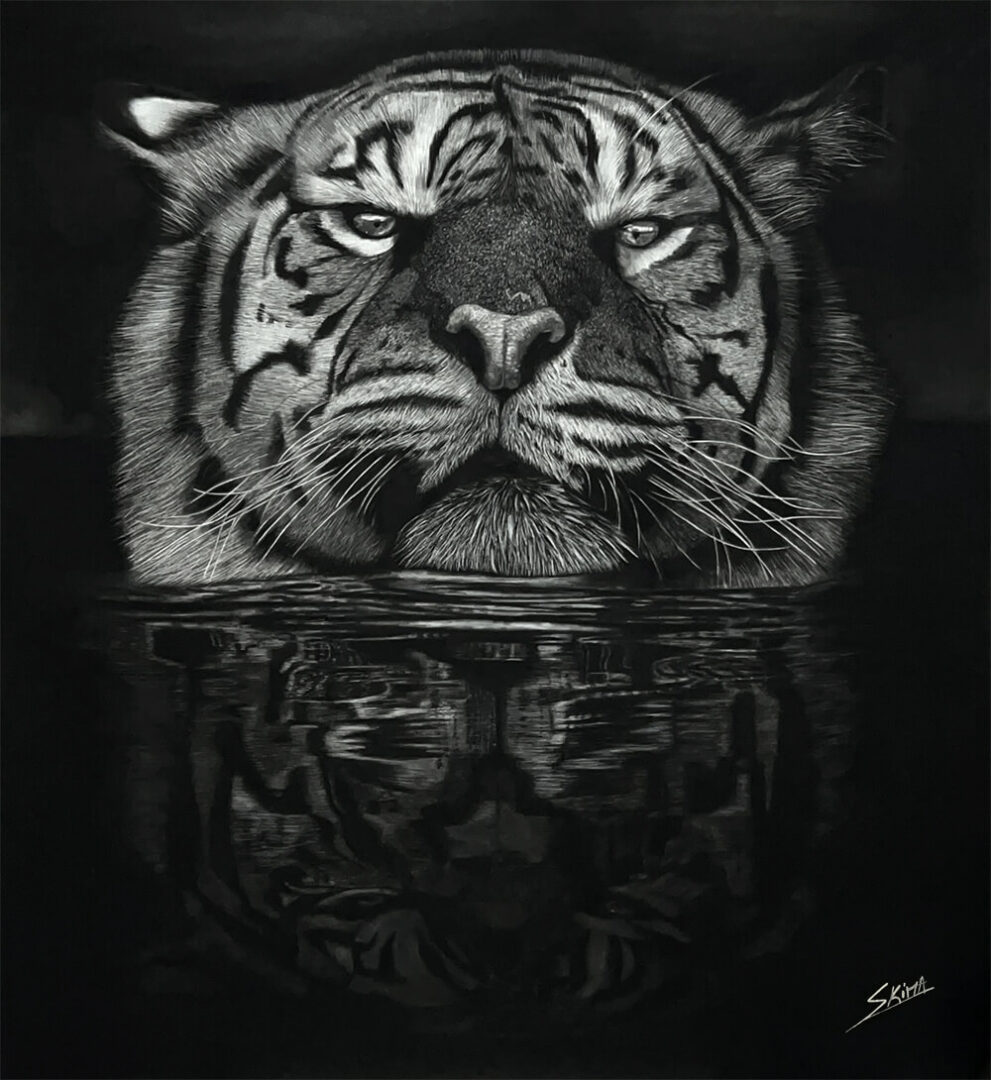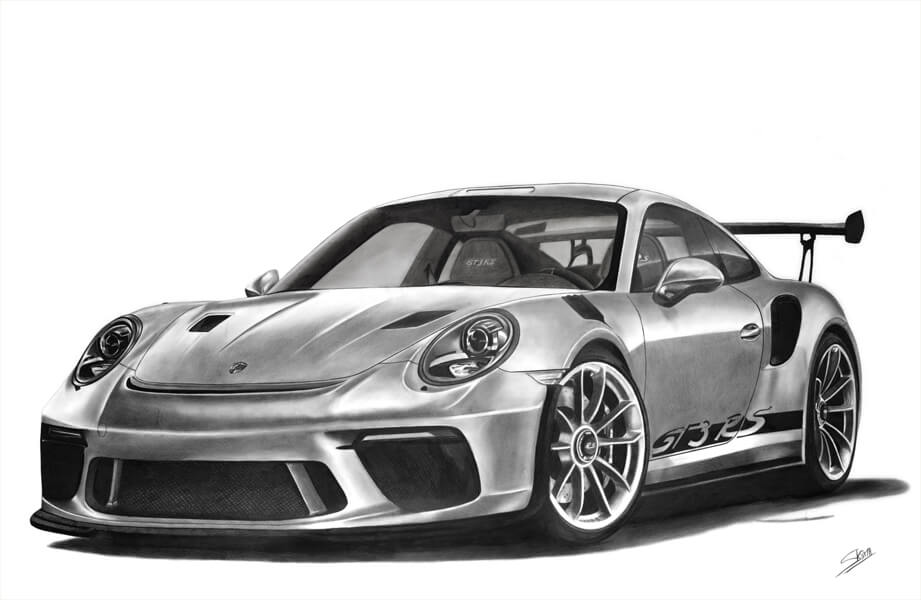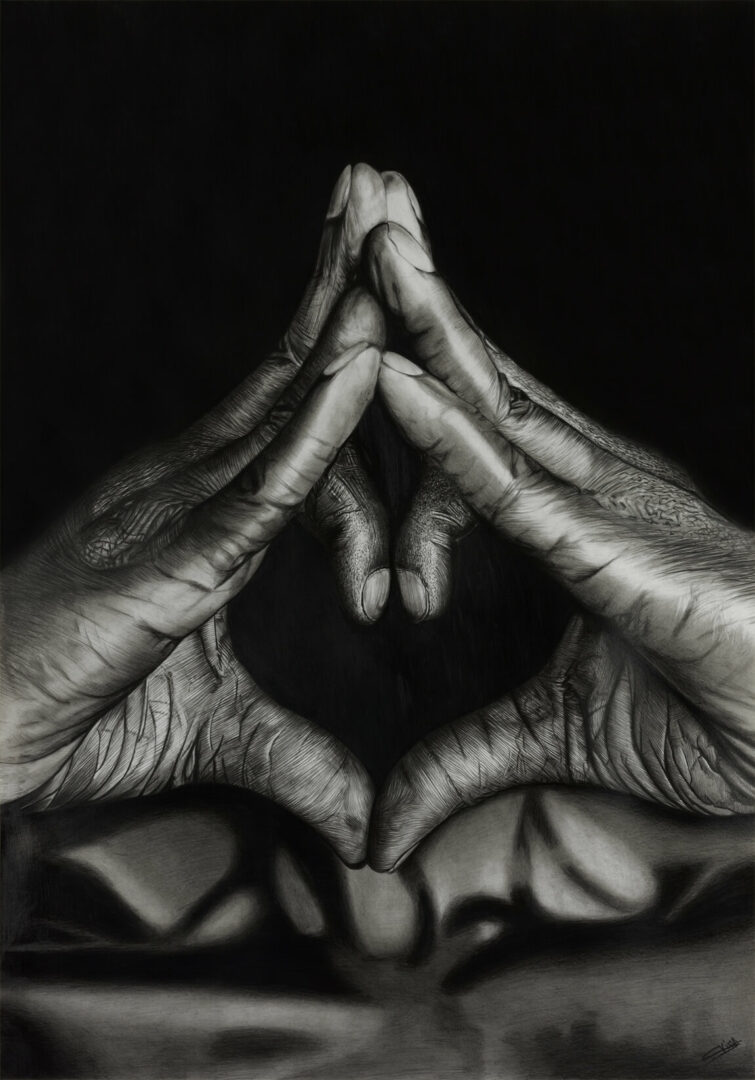Realistic Drawing
SKIMA
Maxime Thevenet, alias Skima, was born in 1994 in French Burgundy.
At the Academy of Applied Arts, his artistic education opened him up to disciplines combining arts and crafts, design and scenography. Beyond the learning of various techniques, he forges his personal culture and creative process.
From his passion for woodworking, Skima has kept the memory of the grain and its subtlety. He also kept his favorite tool: the black stone, the carpenters' pencil that was used to trace cuts.
Formerly made from ampelite, black chalk/stone was used by Renaissance artists to give a deep and matte line to their sketches.
Today black stone is composed of carbon and clay. It highlights the contours of a face and underlines silky lines. Skima knows how to vary the nuances to obtain the misty blur of a disheveled fur.
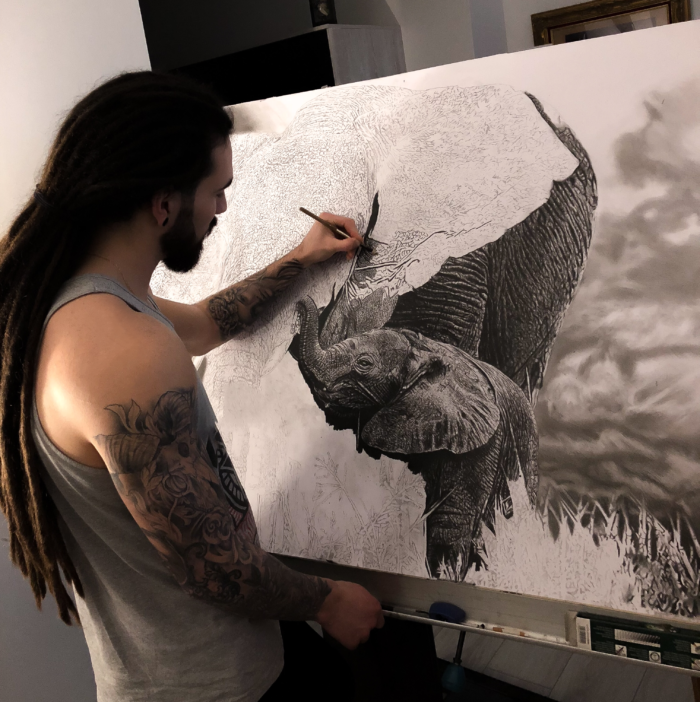

Technique
The mastery of Black
In the work of Skima, despite being very dense and omnipresent, black is not a monochrome.
Like Pierre Soulage's L’outrenoir, it enhances textures, movement. It confronts the artist with the art of taming light. The white pencil brings clarity to the elaboration of the details and traces the paths taken by the light.
Each work is a slow elaboration where his photographic eye stages a game of 'chiaroscuro', and invents perspectives in the service of a dramaturgy.
He is reminiscent of Lee Jeffries in his way of framing the subject, of capturing emotion in close-up, of seeking the soul behind the realism of the portrait.
Alex Doppia
Director at Galerie Montmartre
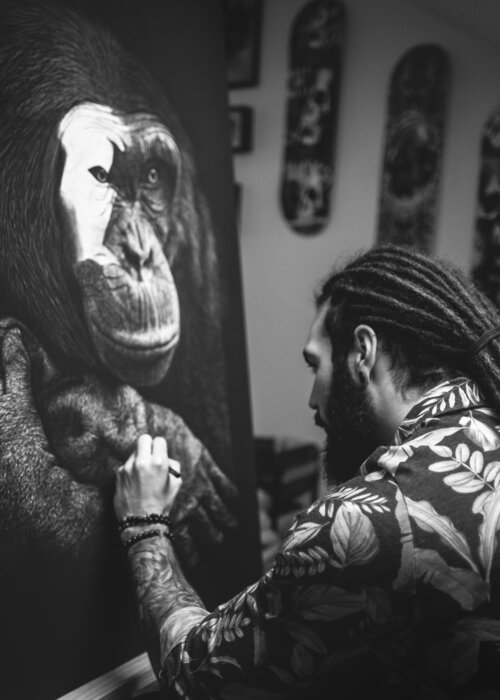
Artistic vision
A simulated reality
He is reminiscent of Lee Jeffries in his way of framing the subject, of capturing emotion in close-up, of seeking the soul behind the realism of the portrait.
But Skima works freehand and without filter. He manages to reflect the gravity in the hypnotic eyes of a beast, to capture the wild and fragile beauty, the dramatic intensity in the gaze of a great ape.
We have often spoken of hyperrealism to designate the work of Skima. It carries some truth, as his creations reveal a perfect technical mastery and faithfully reproduce the smallest details and attitudes of the model.
However, Skima's approach is not a simple imitation, however flawless. His quest is that of a simulated reality, an illusion of reality leaving room for dream and mystery.
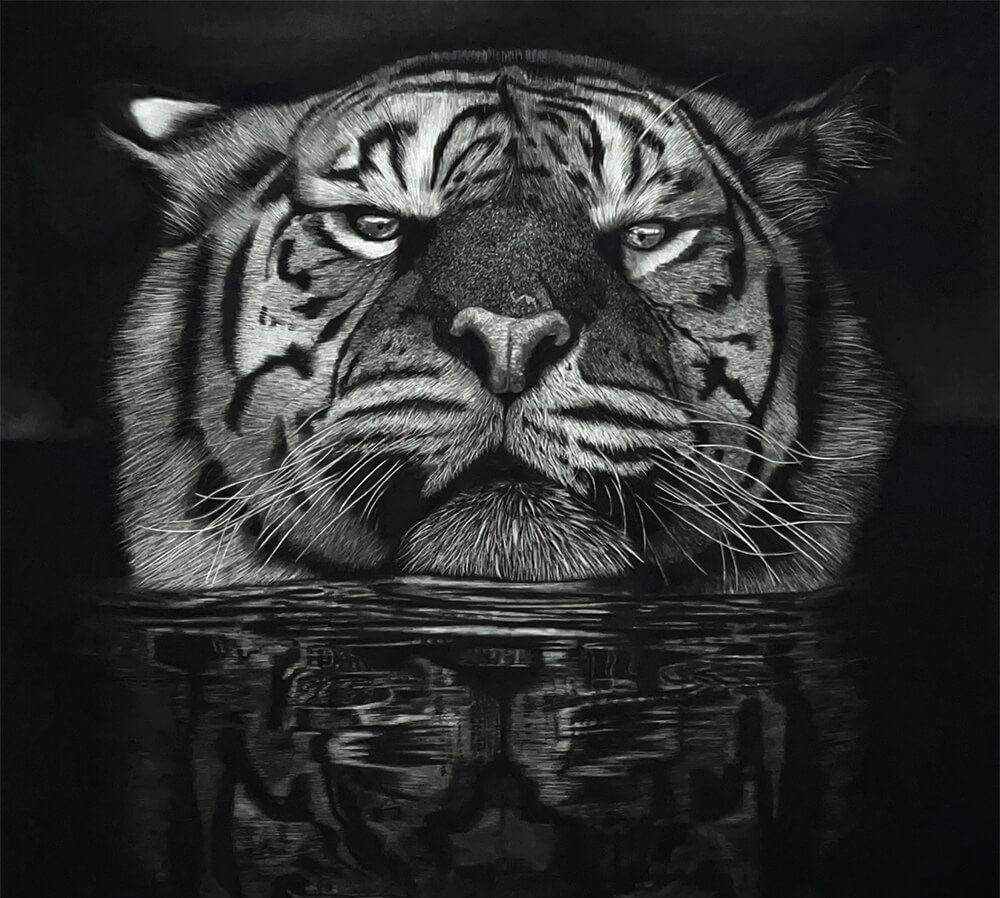
Animal subjects
To represent consciousness
The original drawings exhibited at Galerie Montmartre is a testimony of delicacy, modesty and respect.
Skima paints each animal as a subject, not only in its relationship of submission to man, but with its own language and consciousness.
Looking at these portraits of felines and monkeys makes you want to exclaim Ecce Animot! with the philosopher Jacques Derrida in his plea for animal ethics:
"In the general singular Animal, we must substitute the Animot, [ …] in order to better understand "this irreducible living multiplicity".
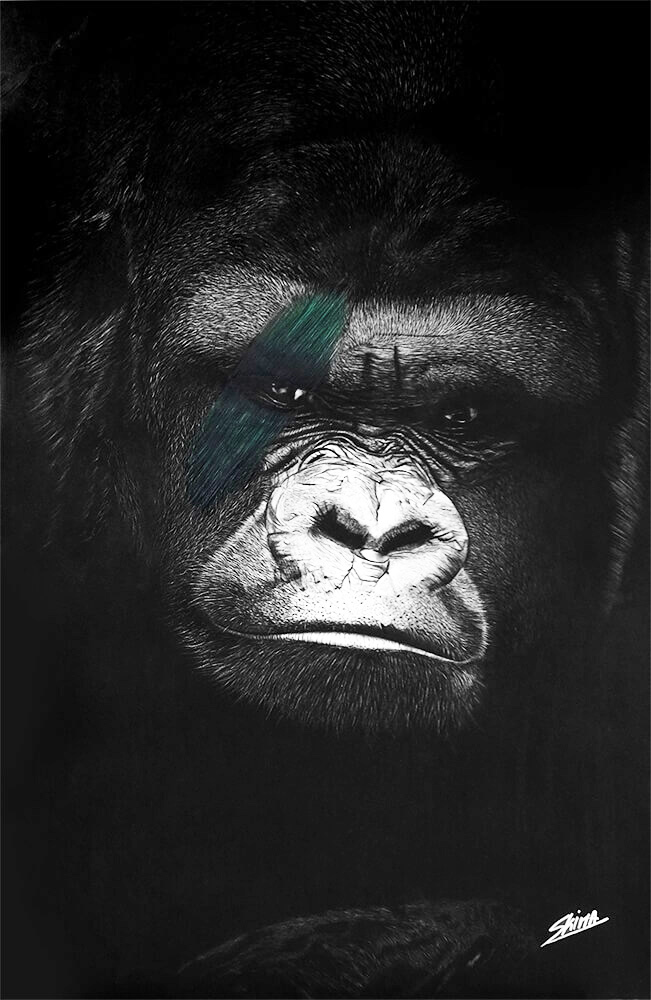
Exclusive permanent residence
Galerie Montmartre
Bright lines of color come to sweep an eye and this burst of color brings a rhythm, a vibration to the composition. The color enhancement introduces a fantastic element. Faced with the enigmatic gaze of this majestic gorilla, imagining ourselves being seen by him, we will meditate on these words:
"Often I wonder, me, to see, who I am - and who I am at the moment when, surprised naked, in silence, by the gaze of an animal, I have trouble, yes, trouble to overcome discomfort. »
Jacques Derrida, The animal that therefore I am, Paris, 2006
We have chosen to accompany this brilliant artist for his virtuosity, but above all for the requirement of his story, his art, by a detail, to go beyond reality in favor of a metaphorical imagination.
And quite simply for the sensitivity and spirituality that emanates from his portraits.
Artwork selection
Discover our exclusive collection of originals
See the complete collection